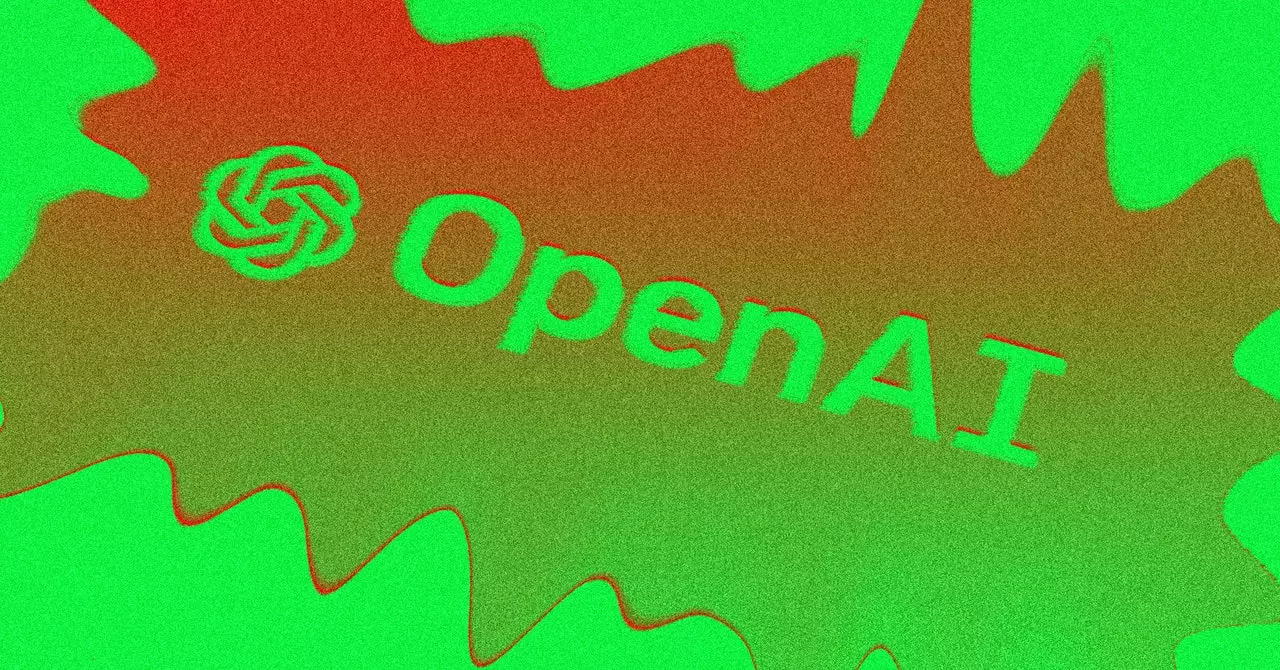As the global enthusiasm for artificial intelligence (AI) crescendos, OpenAI has decided to throw its hat into the competitive ring by unveiling a more compact and efficient version of its flagship AI model. Dubbed o3-mini, this iteration aims to position OpenAI favorably in light of the rising threat from DeepSeek, a Chinese AI startup that has stirred up quite the buzz with its own offerings. The looming competition comes at a time when corporate giants like Google and Anthropic are scrutinizing their strategies and price points in response to market pressures created by new entrants.
Anticipation has surrounded OpenAI’s introduction of o3-mini, a scaled-down manifestation of its cutting-edge AI capabilities. The company has promised that this model, which will be accessible to all Plus, Team, and Pro users of ChatGPT, offers advanced reasoning abilities, making it a noteworthy upgrade compared to its predecessors. Interestingly, the free version of ChatGPT users can also get a taste of o3-mini, although with limitations on query capacity.
In the competitive landscape of AI, features and efficiency often serve as critical differentiators. OpenAI has touted that o3-mini can deconstruct complex problems into manageable parts for optimal resolutions, a feat that may redefine expectations from smaller AI models. This intelligent disaggregation might not just enhance the performance outcomes but could also streamline workflows and elevate user experiences significantly.
To fully actualize this model, OpenAI has enlisted the help of talented PhD candidates, signaling a concerted effort to tap into academia for expertise in AI training. Emails and job postings have revealed that the company is compensating PhD computer science students at a rate of $100 per hour for collaborative research projects involving unreleased models. This strategic hiring not only highlights OpenAI’s commitment to innovation but also showcases the company’s responsiveness to emerging technology demands.
By incorporating advanced theoretical frameworks that these scholars provide, OpenAI aims to enhance the capabilities of its models. Furthermore, the intention to develop scientifically challenging coding problems reflects an ambition to push the boundaries of what AI can achieve, especially in specialized fields such as mathematics, science, and coding.
The entry of DeepSeek into the AI arena has undoubtedly positioned it as a formidable competitor for OpenAI. This startup’s R1 model has gained notoriety for its accessible price point and innovative features, which reallocate resources more efficiently. If DeepSeek’s claims are to be believed, their operational efficiencies in training and deployment might prove to be pivotal. OpenAI’s concerns about DeepSeek—including the speculation that R1 models may have been trained using outputs from OpenAI’s own work—underscore the increasing complexity and stakes involved in the ongoing AI race.
The implications of DeepSeek’s rise extend beyond market rivalry; it provokes a broader dialogue surrounding global AI governance, especially in how US policies are crafted to maintain technological leadership. The US government has adopted various strategies to stifle China’s access to advanced AI training tools, recognizing the urgent need to curtail potentially competitive advancements. As such, the emergence of DeepSeek may elevate the scrutiny and accelerate discussions around international technology policy and national security.
Though o3-mini may not necessarily eclipse DeepSeek’s offerings in terms of positioning, it signals OpenAI’s renewed focus on operational efficiency. By emphasizing improved mathematical, scientific, and coding capabilities, along with new functionalities such as web search integration and adaptable reasoning levels, OpenAI is indicating that it is not willing to cede ground without a fight. The dynamics surrounding AI models continue to evolve, pushing companies to recalibrate their approaches in ever-shorter timeframes.
The landscape of artificial intelligence is rapidly changing, with OpenAI’s o3-mini aiming to navigate these treacherous waters. With competition looming, particularly from innovative startups like DeepSeek, the coming months will be critical in determining how effectively established giants can adapt to new market conditions. OpenAI’s strategy not only highlights the importance of continuous improvement in algorithm design but also underscores a growing need for agility and foresight in operational planning. The era of AI is upon us, and every player must adapt or risk falling behind.

